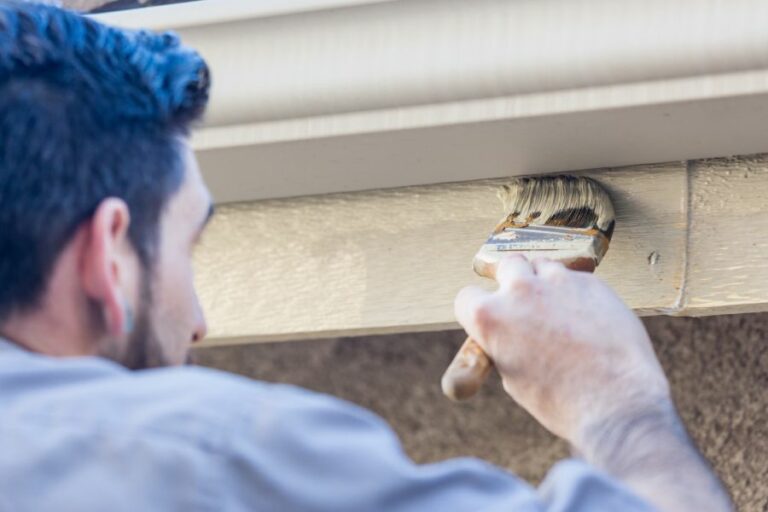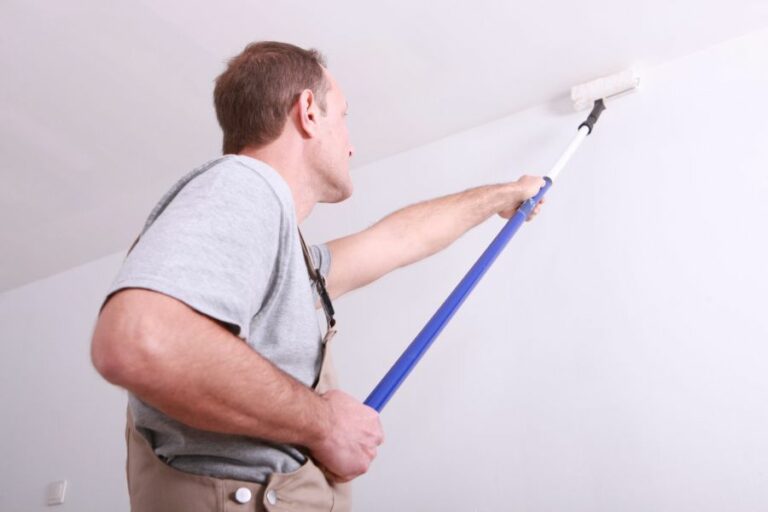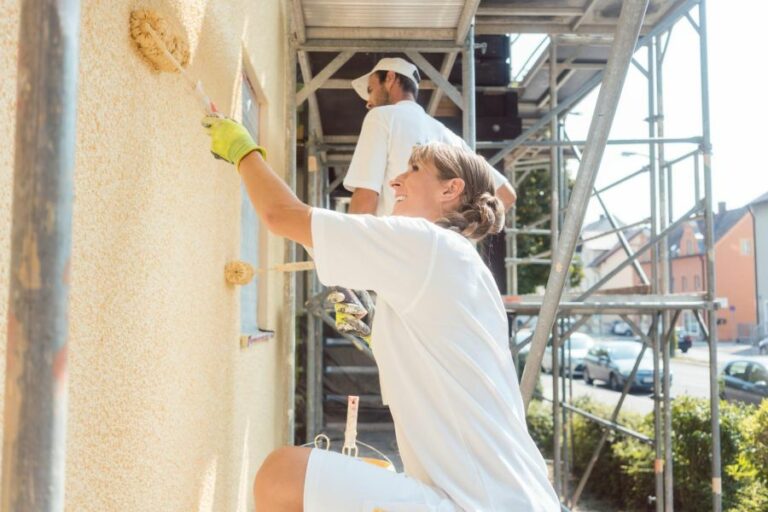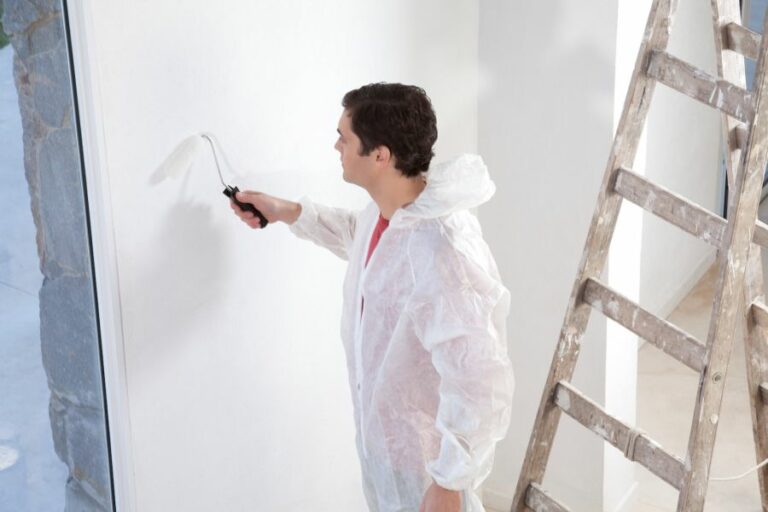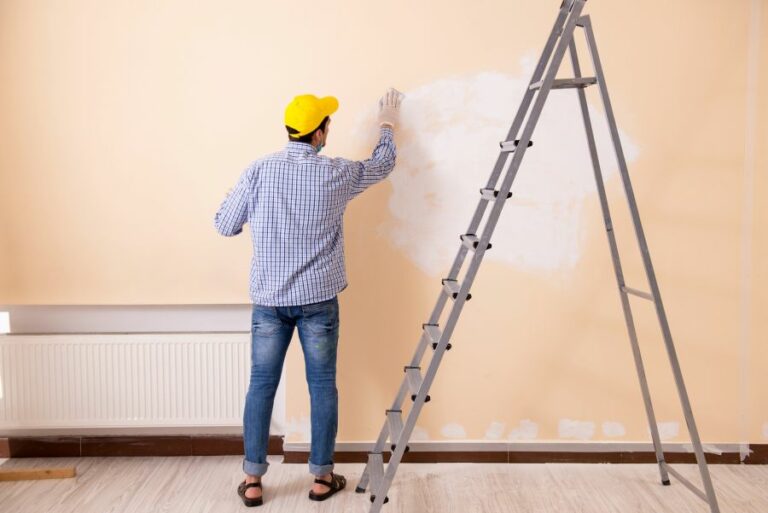Surface Prep Guidelines: Environment & Conditions
Preparing surfaces for various treatments, coatings, or installations can seem like a daunting task, but fear not – we’ve gathered all the essential guidelines you’ll need to ensure success in any environment or condition. Understanding the key aspects of surface preparedness will not only be instrumental in achieving optimal results but also save you time and effort in the long run.
Surface prep guidelines: environment & conditions:
Proper surface preparation is crucial for a successful coating application. Factors like temperature, humidity, dew point, wind, contamination, and substrate condition can impact adherence, curing, and long-term performance. Follow expert recommendations for different environments and conditions to ensure optimal durability and effectiveness of coatings.

Discover the essential guidelines for effective surface preparation and the key factors required to adapt to environmental conditions. Unveil the secrets to achieve a flawless and lasting finish. Read on to optimize your techniques, ensuring success in any setting.
Contents
- 1 Guidelines for Surface Preparation: Environment & Conditions
- 2 Surface Preparation Necessities: What to Consider
- 3 Popular Standards for Proper Surface Preparation
- 3.1 • NACE International
- 3.2 • International Organization for Standardization (ISO)
- 3.2.1 – ISO 8501-1:2007: Preparation of Steel Substrates Before Application of Paints and Related Products Visual Assessment of Surface Cleanliness
- 3.2.2 – ISO 8501-2:1994: Preparation of Steel Substrates Before Application of Paints and Related Products Visual Assessment of Surface Cleanliness Part 2: Stains, streaks, and shadows
- 3.3 • Swedish Standards Institute (SSI)
- 3.4 • Recommendations for Effectively Following Surface Preparation Standards
- 4 Understanding SA 2.5 Surface Preparation Method
- 5 Key Guidelines for Implementing SSPC-SP 16
Guidelines for Surface Preparation: Environment & Conditions
Proper surface preparation is vital for a successful and long-lasting coating application. The environment and surrounding conditions play a significant role in the surface preparation process.
• Importance of Environment & Conditions
Coatings can fail, or their performance can be negatively affected if the environment and conditions are not considered during surface preparation. The following factors influence the adherence, curing, and long-term performance of the coating:
- Temperature
- Humidity
- Dew point
- Wind
- Contamination
- Substrate condition
By understanding and managing these factors, we can ensure a successful coating application and extend the durability of the coatings.
• Temperature Considerations
Temperature plays a major role in the surface preparation process. It affects the cure time, flow, leveling, and overall performance of the coating.
– Ideal Temperature Range
I recommend maintaining a temperature between 50F (10C) and 100F (38C) during surface preparation and coating application. This temperature range allows for proper curing, adhesion, and performance of the coatings.
– Cold Weather Recommendations
Surface preparation in cold environments can be challenging. Follow these recommendations when preparing a surface in low temperatures:
- Warm the Substrate: Use heaters or other methods to warm the surface before and during surface preparation. This ensures proper adhesion and performance of the coatings.
- Cure Time Adjustment: Be aware that cure times may be longer in cold temperatures. Follow the manufacturer’s recommendations for cold weather applications.
- Proper Ventilation: Ensure adequate ventilation when using heaters, as they can introduce contaminants that may impact the coating’s adhesion.
– Hot Weather Recommendations
High temperatures also pose challenges to surface preparation and can cause coatings to cure too quickly, leading to improper adhesion and performance. Follow these recommendations for hot weather surface preparation:
- Cool the Substrate: Use cooling methods like shading or misting systems to cool the surface before and during surface preparation.
- Cure Time Adjustment: Be aware that cure times may be shorter in hot temperatures. Follow the manufacturer’s recommendations for hot weather applications.
- Use the Right Coating: Choose coatings formulated for high temperatures to ensure proper performance.
• Humidity, Dew Point, and Wind
High humidity and dew point can cause condensation on the surface, leading to adhesion problems and coating failure. Wind can affect the drying time of coatings, introducing undesired contaminants and causing surface defects.
– Humidity and Dew Point Recommendations
To avoid issues related to humidity and dew point, follow these recommendations:
- Monitor Conditions: Monitor humidity, temperature, and dew point during surface preparation and coating application.
- Avoid Condensation: Ensure the surface temperature remains at least 5F (3C) above the dew point when preparing and coating the surface.
- Consider Time of Day: Perform surface preparation and coating application during the time of day when humidity and dew point are lowest.
– Wind Recommendations
To minimize the impact of wind on surface preparation:
- Work in Enclosed Spaces: It’s advised to perform surface preparation in sheltered areas to keep wind impact minimal.
- Use Wind Barriers: If working in an open area, consider using temporary wind barriers, such as windbreaks or screens, to minimize the effect of wind on the surface and coatings.
• Contamination and Substrate Condition
Properly assessing and addressing contamination and the substrate’s condition are crucial factors during surface preparation.
– Identifying Contamination
Inspect the surface for visible contaminants, such as dirt, grease, and chemicals, as well as invisible contaminants, like salts. ASTM D3276 provides guidance on identifying contaminants and determining the appropriate method for their removal.
– Preparing the Substrate
Prepare the substrate by removing contaminants and creating a clean, sound, profiled surface for the coating to adhere to. The choice of preparation methods depends on the substrate, coating system, and project requirements.
Common methods include abrasive blasting, power tool cleaning, and water jetting.
• Conclusion
Proper surface preparation, considering the environment and conditions, is crucial for a successful and long-lasting coating application.
By understanding and managing temperature, humidity, dew point, wind, contamination, and substrate condition, we can increase the durability and effectiveness of coatings.
Surface Preparation Necessities: What to Consider
Surface preparation is a crucial step in various industrial processes like painting, coating, or bonding. It guarantees that the surface is free from any contaminants, leading to better adhesion and longer-lasting results.
• Reasons for Proper Surface Preparation
– Improved Adhesion
One of the primary requirements of surface preparation is to ensure that the material applied to the surface bonds well. In cases like painting or coating, proper surface preparation allows for better adhesion and coverage, reducing the risk of peeling, flaking, or other defects.
– Increased Durability
A well-prepared surface minimizes the possibility of premature failure due to corrosion, moisture, and chemicals. It increases the longevity of structures, components, and equipment, saving resources and money in the long run.
– Enhanced Appearance
When a surface is clean and free from contaminants, the final appearance improves significantly. Proper surface preparation leads to a smooth, even finish, which enhances aesthetics and provides a better overall result.
• Methods of Surface Preparation
– Mechanical Methods
- Abrasive Blasting: This method uses high-pressure air to propel abrasive materials like sand or glass beads onto the surface, removing rust, paint, and other contaminants. The most popular methods include sandblasting and shot blasting.
- Grinding and Sanding: Handheld grinders and sanders are used for removing small imperfections, smoothening the surface, and preparing it for further treatment.
- Water Jetting: High-pressure water jets are used for removing dirt, grime, and other loose contaminants. This method is particularly useful for cleaning large structures or areas with limited access.
– Chemical Methods
- Acid Etching: A strong acid solution is applied onto the surface to remove contaminants and create a roughened texture, improving the adhesion of coatings and paints.
- Solvent Cleaning: Organic solvents like acetone, toluene, or methyl ethyl ketone (MEK) are used for removing oil, grease, and other residues before other surface preparation methods are applied.
- Alkaline Cleaning: Alkaline cleaning agents, such as sodium hydroxide, are applied on the surface to remove organic contaminants like oil, grease, and dust.
– Recommendations for Effective Surface Preparation
- Select the Appropriate Method: It is important to choose the right method of surface preparation based on the type of material, the extent of contamination, and specific project requirements. Always follow the manufacturer’s guidelines for the application of paints, coatings, or adhesives.
- Ensure Safety: Surface preparation involves processes that can expose workers to dangerous chemicals or flying debris. Utilize proper personal protective equipment (PPE) and follow safety guidelines during the entire process.
- Inspect the Surface Before and After: Before beginning the surface preparation process, ensure that there are no visible defects or damage. Once the surface is prepared, inspect it again to ensure that it is free from contamination and ready for the next process.
- Consider Environmental Concerns: Certain methods of surface preparation can generate dust or involve hazardous substances. Proper waste disposal and management are essential to maintain a safe and eco-friendly work environment.
• Conclusion
Surface preparation is an essential step in the application of coatings, adhesives, or other materials. Properly prepared surfaces improve adhesion, durability, and overall appearance, while also preventing premature failure or defects.
To ensure effective surface preparation, always select the appropriate method, follow safety guidelines, and inspect the surface before and after the process.
For further information on surface preparation and recommended practices, consult resources from organizations such as the American Society for Testing and Materials (ASTM) and the Society for Protective Coatings (SSPC).
Popular Standards for Proper Surface Preparation
Surface preparation is a crucial step in many industrial processes, as it ensures that the surface is clean, free of contaminants, and ready for further processing, such as coating applications or welding.
Several international guidelines and standards for surface preparation have been developed, which provide a framework for achieving desired surface conditions.
• NACE International
NACE International (formerly known as the National Association of Corrosion Engineers) is a global organization that provides certification, education, and research on corrosion prevention and mitigation. NACE has developed several widely used surface preparation standards.
– NACE No. 1/SSPC-SP 5: White Metal Blast Cleaning
This standard signifies the highest level of surface cleanliness. It requires removing all visible oil, grease, dust, dirt, rust, mill scale, paint, and other foreign matter, leaving a white metal appearance.
White metal blast cleaning is typically used in applications with the highest corrosion risk or where optimal adhesion of a coating system is required.
– NACE No. 2/SSPC-SP 10: Near-White Metal Blast Cleaning
This standard is similar to NACE No. 1 but allows for a slight presence of stains, streaks, or other surface imperfections.
Near-white metal blast cleaning provides a surface ideal for coatings with stringent adhesion requirements while allowing for a more cost-effective and time-efficient surface preparation process.
– NACE No. 3/SSPC-SP 6: Commercial Blast Cleaning
This standard also requires the removal of all visible contaminants but permits a greater allowance for staining compared to NACE No. 2. Commercial blast cleaning is sufficient for most general-purpose coating applications, where a high degree of adhesion is less critical.
• International Organization for Standardization (ISO)
The International Organization for Standardization (ISO) develops and publishes international standards across a wide range of industries. ISO has established a series of standards for surface preparation known as ISO 8501.
– ISO 8501-1:2007: Preparation of Steel Substrates Before Application of Paints and Related Products Visual Assessment of Surface Cleanliness
This standard provides guidelines for the visual assessment of steel substrates after various surface preparation methods. It includes four surface cleanliness grades:
- Sa 1: Light blast cleaning
- Sa 2: Thorough blast cleaning
- Sa 2.5: Very thorough blast cleaning
- Sa 3: Blast cleaning to visually clean steel
– ISO 8501-2:1994: Preparation of Steel Substrates Before Application of Paints and Related Products Visual Assessment of Surface Cleanliness Part 2: Stains, streaks, and shadows
This standard outlines the visual assessment of steel substrates with stains, streaks, and shadows after surface preparation and is typically used in conjunction with ISO 8501-1.
• Swedish Standards Institute (SSI)
The Swedish Standards Institute (SSI) developed a surface preparation standard known as the Swedish Pictorial Standard, which is one of the earliest and most widely recognized standards in the industry. It consists of four cleanliness levels:
– St 1: Hand Tool Cleaning
Hand tool cleaning involves the use of manual tools, such as scrapers, wire brushes, and sandpaper, to remove loosely adhering contaminants from the surface. This method leaves a rough surface and is typically used for low-performance coatings.
– St 2: Power Tool Cleaning
Power tool cleaning employs power-driven impact, rotary, or vibratory tools to remove rust, mill scale, and paint from the surface. This method results in a more uniform surface finish compared to hand tool cleaning and is suitable for general-purpose coatings.
– St 3: Power Tool Cleaning to Bare Metal
This standard requires removing all visible rust, mill scale, and paint from the surface using power tools, leaving the surface with a metallic sheen. It provides a suitable surface for higher-performance coatings.
– St 4: Flame Cleaning
Flame cleaning uses intense heat generated by a propane or acetylene torch to remove surface contaminants and heat scale. This method is primarily used for pre-weld cleaning, as it leaves the surface with a bluish tint.
• Recommendations for Effectively Following Surface Preparation Standards
To achieve optimal results and adhere to the selected surface preparation standard, it is essential to:
- Understand the requirements of the standard and ensure proper training for surface preparation personnel.
- Select the appropriate surface preparation method and tools based on the standard and material to be cleaned.
- Continually inspect and monitor the surface preparation process, adjusting techniques as required to maintain adherence to the chosen standard.
In conclusion, understanding and adhering to surface preparation standards provide a consistent and reliable foundation for achieving optimal performance from coatings, welds, and other industrial processes.
By considering your project’s application and material requirements and selecting the most suitable standard, you can ensure the longevity and durability of your final product.
Standard | Description |
|---|---|
SSPC-SP 1 | Solvent Cleaning |
SSPC-SP 2 | Hand Tool Cleaning |
SSPC-SP 3 | Power Tool Cleaning |
SSPC-SP 5 | White Metal Blast Cleaning |
SSPC-SP 6 | Commercial Blast Cleaning |
SSPC-SP 7 | Brush-Off Blast Cleaning |
SSPC-SP 8 | Pickling |
SSPC-SP 10 | Near-White Blast Cleaning |
SSPC-SP 11 | Power Tool Cleaning to Bare Metal |
SSPC-SP 12 | Surface Preparation and Cleaning of Metals by Waterjetting Prior to Recoating |
SSPC-SP 13 | Surface Preparation of Concrete |
SSPC-SP 14 | Industrial Blast Cleaning |
Understanding SA 2.5 Surface Preparation Method
Surface preparation is a critical process to ensure the longevity and effectiveness of protective coatings on various surfaces.
With numerous methods available to cater to different applications, SA 2.5 (near-white metal) surface preparation stands out as one of the industry’s most widely recognized and utilized standards.
• Understanding SA 2.5 Surface Preparation
The SA 2.5 standard, originating from the Swedish Standards Institute, is now internationally recognized and adopted worldwide.
The term “SA 2.5” refers to a near-white metal blast-cleaning standard, which emphasizes thorough surface cleaning and roughness to facilitate excellent adhesion for coating systems.
To ensure uniformity and consistency, the standard includes visual comparators, known as SSPC-VIS 1 guide, which allows inspectors to compare results with reference photographs.
Properly prepared surfaces should have a uniform grey appearance free from oil, grease, rust, mill scale, and other contaminants.
• Importance of SA 2.5 Surface Preparation
Achieving adequate surface preparation is crucial for several reasons:
- Coating Adhesion: The success of protective coatings is highly dependent on how well they adhere to a surface. Roughened surfaces, as achieved by the SA 2.5 standard, provide better adhesion for coatings by increasing the surface area and mechanical bonding.
- Corrosion Protection: To protect against corrosion effectively, coatings need to form a long-lasting barrier on the metal surface. The removal of unwanted contaminants and the proper application of protective coatings on a well-prepared surface can significantly reduce corrosion rates and increase the coating’s lifespan.
- Quality Assurance: The SA 2.5 standard has strict criteria to ensure the highest possible quality and consistency in surface preparations. Following the right processes ensures a controlled environment where protective coatings can be applied correctly and perform as intended.
• Methods to Achieve SA 2.5 Surface Preparation
There are several methods to achieve the desired SA 2.5 surface preparation, with abrasive blasting being the most commonly used technique. The following methods are suitable for reaching the SA 2.5 standard:
- Dry abrasive blasting: This method involves propelling abrasives such as steel grit, coal slag, or crushed glass with high pressure onto the surface. As the abrasive strikes the surface, it removes contaminants and roughens the substrate to achieve the desired cleanliness and profile. Typically used on large-scale projects in industries such as offshore, marine, and construction.
- Wet abrasive blasting: Similar to dry abrasive blasting, this method involves using water to encapsulate the abrasive and control excessive dust generation. While it is a less aggressive method compared to dry blasting, it offers benefits such as reduced dust, mitigated airborne contamination, and better visibility for operators.
- UHP (Ultra-high-pressure) water jetting: Using water pressure between 20,000 to 40,000 psi, UHP water jetting effectively removes coatings, contaminants, and rust from surfaces. While not imparting a roughened surface profile as abrasive blasting does, it is a suitable method for achieving a clean substrate, particularly in industries where abrasives may pose a risk to sensitive equipment.
To determine the most appropriate method for your project, consider your specific requirements, budget, and environmental concerns.
• Tips for Optimal SA 2.5 Surface Preparation
Achieving a successful near-white metal blast clean requires expertise, careful planning, and monitoring. Here are some recommendations to ensure optimal results:
- Select appropriate abrasives: The type of abrasive selected should match project requirements and the coating system being applied. Consult your coating supplier and abrasive manufacturer to determine the best combination for your application.
- Monitor blasting parameters: Maintaining adequate air pressure, abrasive flow rate, nozzle size, and distance from the surface are critical factors in consistently achieving the desired finish. Regular monitoring of equipment performance and operator technique can help avoid inconsistencies in preparation.
- Ensure proper surface cleanliness: Use SSPC-VIS 1 as a visual guide to ensure that the job is progressing as it should. Inspect the surface for embedded contaminants and foreign particles, as these can compromise coating adhesion. Perform necessary tests, such as ISO 8501-1, to confirm the right cleanliness level.
- Allow for proper drying: After wet abrasive blasting or UHP water jetting, the surface should be allowed to dry thoroughly before applying the protective coating. Any residual moisture can cause corrosion and lead to coating failure.
• Conclusion
SA 2.5 surface preparation is an essential step in ensuring the effectiveness and longevity of protective coatings in various industries.
By adhering to the standard guidelines, selecting the appropriate method, and following best practices, you can achieve a well-prepared substrate that provides optimal protection against corrosion and other environmental threats.
Key Guidelines for Implementing SSPC-SP 16
The SSPC-SP 16, also known as the Society for Protective Coatings Surface Preparation Standard No. 16, is a set of guidelines that dictate the requirements for the surface preparation of concrete before applying protective coatings.
These guidelines are crucial for ensuring the longevity and effectiveness of the coating, which is used to protect the concrete from various external elements such as water, chemicals, and environmental factors.
• Importance of Surface Preparation
Proper surface preparation is essential for the success of any concrete coating project. This is because the performance and durability of the coating are directly related to the quality of the surface preparation.
Adhesion is a critical factor in coating performance, and proper surface preparation allows the coating to bond effectively with the concrete substrate.
Additionally, a well-prepared surface ensures that any defects in the concrete surface are addressed before the coating application, prolonging the structure’s life and minimizing the need for costly repairs in the future.
• Overview of SSPC-SP 16 Guidelines
The SSPC-SP 16 standard provides specific requirements for the surface preparation of concrete, focusing on three primary aspects:
- Cleaning the concrete surface to remove contaminants and other surface irregularities
- Creating a surface profile that promotes strong adhesion between the coating and the concrete
- Assessing and treating any existing defects in the concrete surface
Let’s explore each of these aspects in detail.
– Concrete Surface Cleaning
The first step in preparing a concrete surface is to remove all contaminants that could interfere with the adhesion of the coating. SSPC-SP 16 provides guidelines for removing various types of contaminants, including:
- Dirt, dust, and loose particles
- Oil, grease, and other hydrocarbon-based substances
- Chemical contamination (e.g., salts, acids, alkalis)
- Organic growth (e.g., mold, algae, bacteria)
Various cleaning methods can be employed, depending on the specific contaminants present. These include water cleaning, solvents, detergents, and mechanical methods such as sandblasting or grinding. The most effective cleaning method depends on the specific situation, but it is crucial to select a method that will not damage the concrete or introduce new contaminants.
– Creating a Surface Profile
The next step in the SSPC-SP 16 process is to create a surface profile on the concrete substrate. This involves roughening the surface in order to promote adhesion between the coating and the concrete.
The standard provides guidelines for achieving the required profile, such as using abrasive blast cleaning, water jetting, or other mechanical methods like grinding or scarifying.
When selecting a surface preparation method, it is essential to balance the need for creating an adequate profile with the potential for damaging the concrete substrate.
You can refer to the International Concrete Repair Institute (ICRI) guidelines on selecting the appropriate surface profile for various coating requirements. In general, a rougher profile is needed for thicker coatings, while a smoother profile may be sufficient for thinner coatings.
– Assessing and Treating Defects
Finally, the SSPC-SP 16 standard addresses the identification and treatment of defects in the concrete surface. These defects can include voids, cracks, surface irregularities, or areas of disbonded or spalled concrete.
Preparing the concrete surface often involves repairing these defects, which can include filling voids and cracks, leveling uneven surfaces, and removing disbonded or deteriorated concrete.
Treatment methods for various defects are detailed in the SSPC-SP 16 standard and can include epoxy injection, grouting, cementitious repair materials, or other specialized concrete repair products.
The specific repair method employed will depend on the nature of the defect and the intended use of the structure.
• Conclusion
Adhering to the SSPC-SP 16 guidelines for surface preparation is crucial for ensuring the long-term performance and durability of the applied protective coating on concrete substrates.
By properly cleaning the surface, creating an adequate surface profile, and addressing any existing defects, you can help to promote robust adhesion between the coating and the concrete, maximizing the service life of both the coating and the structure itself.
Category | Description |
|---|---|
Standard Name | SSPC-SP 16: Brush-off Blast Cleaning of Coated and Uncoated Galvanized Steel, Stainless Steels, and Non-Ferrous Metals |
Purpose | Providing surface preparation requirements for cleaning coated and uncoated galvanized steel, stainless steel, and non-ferrous metals, including aluminum, bronze, and copper, prior to painting or coating. |
Surface Cleaning | Removal of loose rust, mill scale, paint, and detrimental foreign matter using brushes, power wire brushes, or abrasives such as steel shot, steel grit, or other abrasive media projected onto the surface. |
Substrate Cleanliness | At least 66% of each unit area must be free of visible residue, including staining, tightly adhering paint, and other tightly adhering materials. |
Profile Depth | Ensure a surface profile suitable for the intended coating as recommended by the coating manufacturer. Maintain a profile depth of 25 micrometers (1.0 mil) minimum. |
Environmental Conditions | Conduct the surface preparation at temperatures and humidity within the guidelines of the coating manufacturer and in compliance with all applicable local, state, and federal regulations. |
Worker Safety | Provide appropriate personal protective equipment (PPE) to workers and follow safety guidelines as per the Occupational Safety and Health Administration (OSHA) and other relevant safety regulations and standards. |

